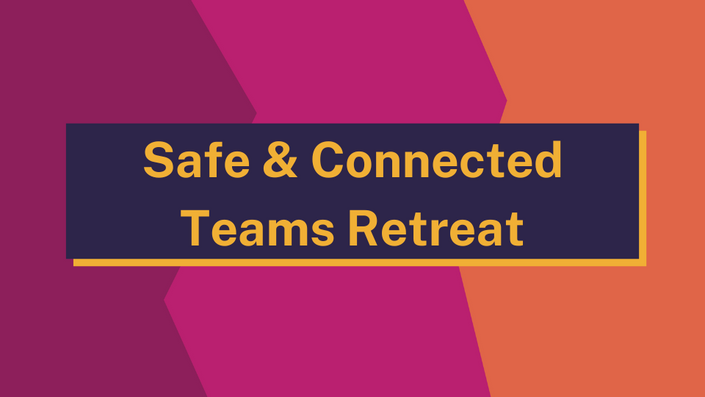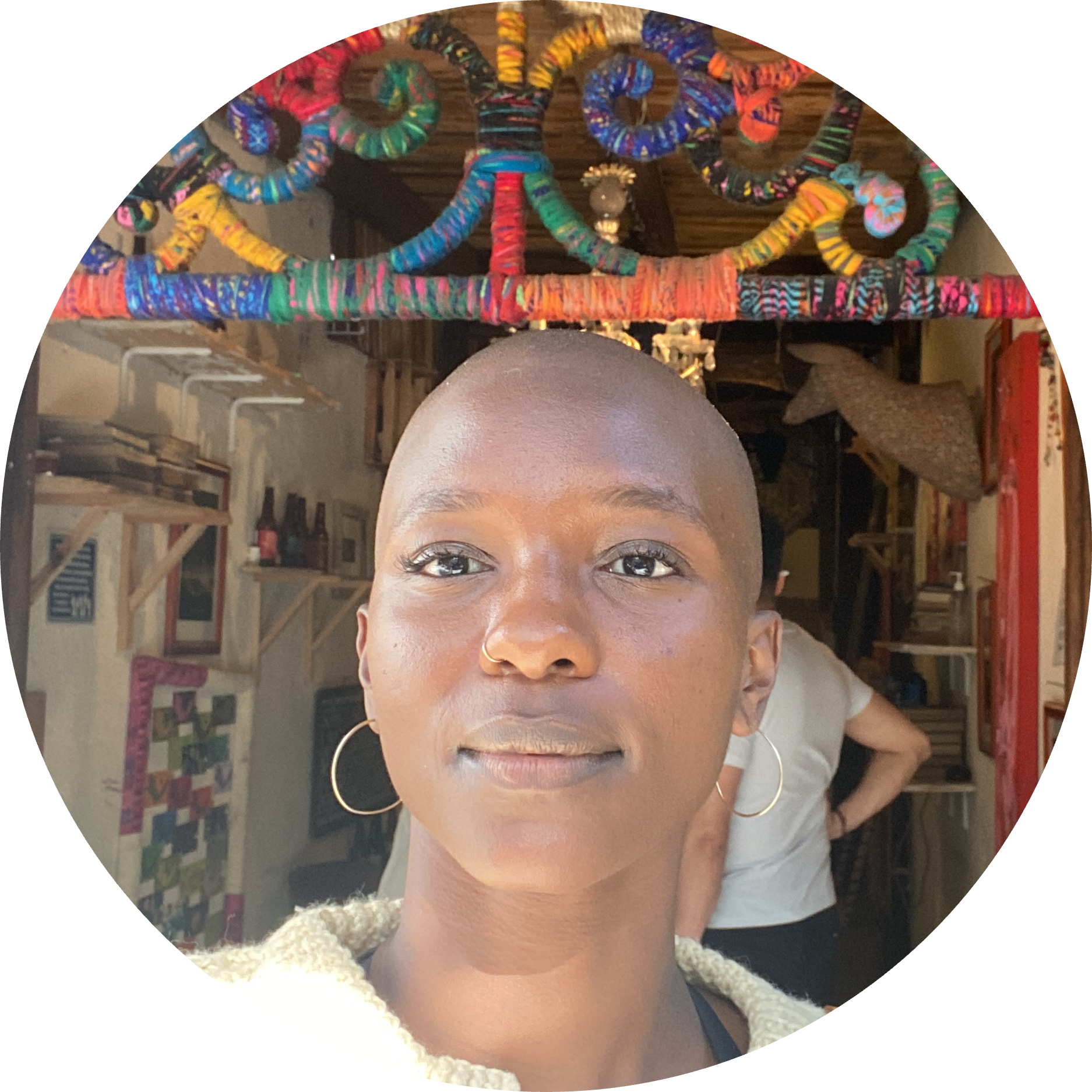
Safe & Connected Teams: Retreat
Note: this is a custom workshop. Read more below to learn about the content, and if/when you're ready to explore what this offering could look like for your team, use
👉🏽this link👈🏽 to schedule a pressure-free discovery call. If you end up wanting to move forward, we'll work together to schedule a day/time that works for both of us!
###
When we fail to adequately and healthfully deal with our emotional experience of change-making work, including:
- Interacting with problems that might outlive us
- Navigating emotions that are meant to derail us
. - Being tasked with seeing clearly and vividly some of the most heartbreaking circumstances of our time
…We run the risk of replicating the distress we’re personally experiencing in our responses to our teammates, and more specifically in the ways in which we communicate and collaborate with one another and in the design of our work cultures. We might find ourselves interacting with each other in ways that are rarely helpful or what some might call “acting a fool.” We might:
- Get short and impatient with our collaborators when under tight deadlines
- Get caught in perfectionism and keep pushing out the timeline
. - Backslide into harsh criticism towards each other when things don’t go as planned
Change-making work by its nature requires us to push past our comfort zone and interact with problems that we have been intentionally conditioned to fear. Even for the bravest of us, this is nerve-wracking. Being able to individually and collectively manage the disorienting emotions and overwhelm that are automatically induced by entering into the unknown is the key, we argue, to being able to successfully transform systems of racism, inequity, and oppression. Because we do need distress – just not too much and not too little. Too much distress and we’re traumatized by the very issues we’re working to solve, trying to do it all and do it now, and ending up burning ourselves out before we see progress. Too little distress and we fail to see the full reality of the problem, working around the edges but with no substantive change.
And even if we are able to right-size our distress, we still need to be able to manage it well. When we feel distress, our bodies and minds have “go-to” ways to manage that distress – ways that can be damaging to our collaborative dynamics and to our overall clarity. As we move towards these really risky and unconventional ways of acting in the world, we need to learn to transmute our default and usually not-helpful ways of doing this work.
So, how do we do that?
We do that by connecting with the sources of distress in our work, and getting on the same page about the right amounts of distress. We do that by understanding and seeing more clearly our individual and team-wide default ways of managing that distress. We do that by learning how to create team structures that help individuals and the team manage distress collectively, and more productively. We do that by working to become safe and connected teams.
There are three key aspects that can help a team continuously reorient themselves towards being safe and connected, even as our work and the world around us push us towards being unsafe and disconnected:
- Purpose - What exactly is it that we’re trying to do together, that we can’t do alone? What are each of our individual connections to the work, and how do we acknowledge and productively use those connections to help us understand what we’re doing together more clearly. How do we understand the varying depths and flavor of emotional (and potentially traumatic) connection we each hold to the systems of oppression we’re working to redesign, and then attune to and attend to those emotions for the purpose of better understanding each other as collaborators and right-sizing our collective emotional distress?
- Team Nervous System - Teams, like individuals, have a default way of responding to distress. Teams have histories and beliefs that determine what an appropriate response is to stressful situations. Under deep stress – the kind of distress that people who are working to innovate against systems of oppression are in – we can see teams' collective nervous systems become dysregulated and stay there, falling into team versions of the “triggered” states of flight, flight, freeze, and fawn. We have grown accustomed to using the umbrella term “culture” to describe these responses, but what is really at the core – and what needs to be addressed – is the team nervous system. In the same way that there are practices helpful for calming an individual’s nervous system and getting them out of their dysregulated state (fight, flight, freeze, fawn) and into a safe state, there are ways we can do this as a team. Once we can spot our team’s dysregulation, we can proactively work to regulate ourselves before we get caught in a counterproductive team dynamic.
- Organizational Resources - There are also ways that we can set up our environment – our organization’s systems, policies, and practices – such that we can proactively support our team’s nervous system regulation. This can be done by ensuring there are 5 key resources available to the team: Encouragement, Correction, Rescuing, Soothing and Celebration. Organizations are likely already strong in providing some of the key resources, and weaker in other areas – or, great at providing resources to some people in the organization but not so great at providing them to others. It’s important to assess both the presence and the equitable distribution of each of these resources, and then make a plan to supplement and potentially redistribute them as a way to create a container that can tolerate high levels of distress without pushing the team into dysregulation.
We’d love to take your team through our one-day “Team Nervous Systems” retreat. We’ll walk you through how to understand what is underneath the not-so-productive ways you’re working together through the lens of your team’s nervous system, and then work together to create what your team needs in order to be in and maintain a more regulated team nervous system state.
~
Because we’re working on refining this offering this fall during the last semester of Issachar’s Apprenticeship, we’re trying to run as many of these workshops as possible, so we’re offering them at our lowest possible rate: just 5K per day-long session for a team of up to 24 participants.
.
💃🏽Next steps + How to enroll💃🏽
If you’re interested, the next step is to use 👉🏽this link👈🏽 to schedule a time to chat with us about your team's specific context and needs. If you're ready to move forward after that conversation, we'll give you instructions for how to tender payment. And if you're not ready, there won't be any pressure or obligation -- we approach these discussions as opportunities to understand your challenges and give you all the info you need to make the best decision for your team 💝.
Your Instructor

Issachar Curbeon (she/her) is a curriculum developer, design researcher and coach. For the past two years, she has been the first Equity Meets Design Apprentice, developing a unique approach to design equity which considers the way that distress and emotions can be utilized to create a more productive design cycle.
Before her apprenticeship, she worked In partnership with mission driven organizations, teams and individuals, cultivating conversations, tools and playful experiments that inspired leaders to explore innovative decisions, practices and strategies. Her current experiments include: a) designing curriculum at the intersection of design thinking, nervous system theory and emotions and b) designing “field trips'' for design researchers in Brooklyn to “despairing locations” to better understand the birth justice ecosystem. Her passion for exploring the intersections of race, gender, class, and health was shaped during her undergraduate studies at The New School in New York City.
Since 2014, she has presented at conferences in South Africa, Los Angeles, Atlanta and Washington D.C, advocating for the reproductive health, rights and justice of Black girls. Issachar received the ELLA Fellowship (2014) and the Generative Fellowship (2016), which allowed her to use design justice to create innovative strategies in her approach to fighting against reproductive oppression. She has previously worked with mission driven non-profit organizations such as Black Women for Wellness, the Women’s Leadership Project, Transitions Family Violence Center, the International Rescue Committee, Corealign, America on Tech, Chicago Abortion Fund, Take Action Minnesota, Planned Parenthood Federation of America, Abortion Care Network, and Momsrising.